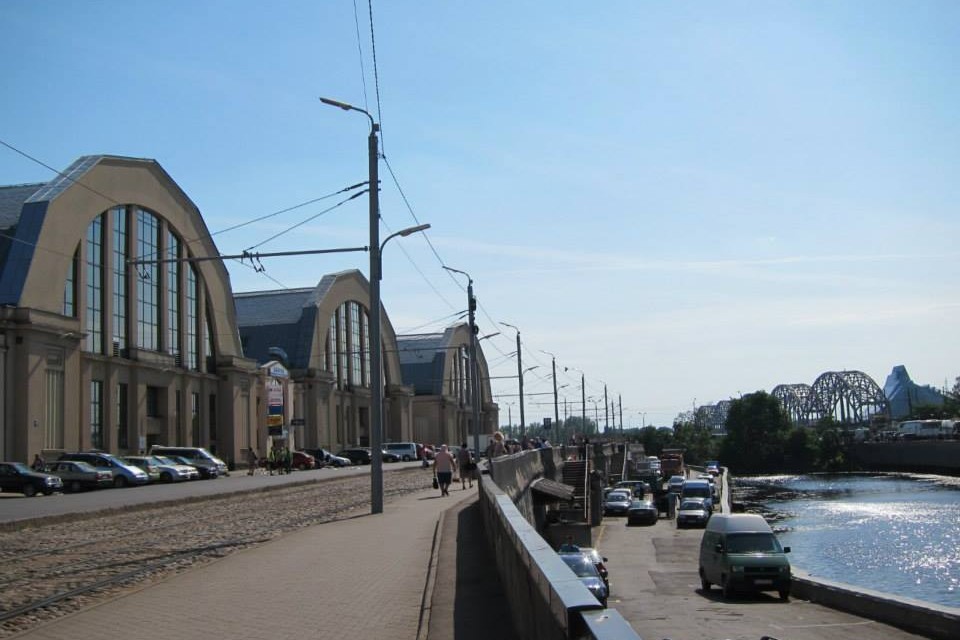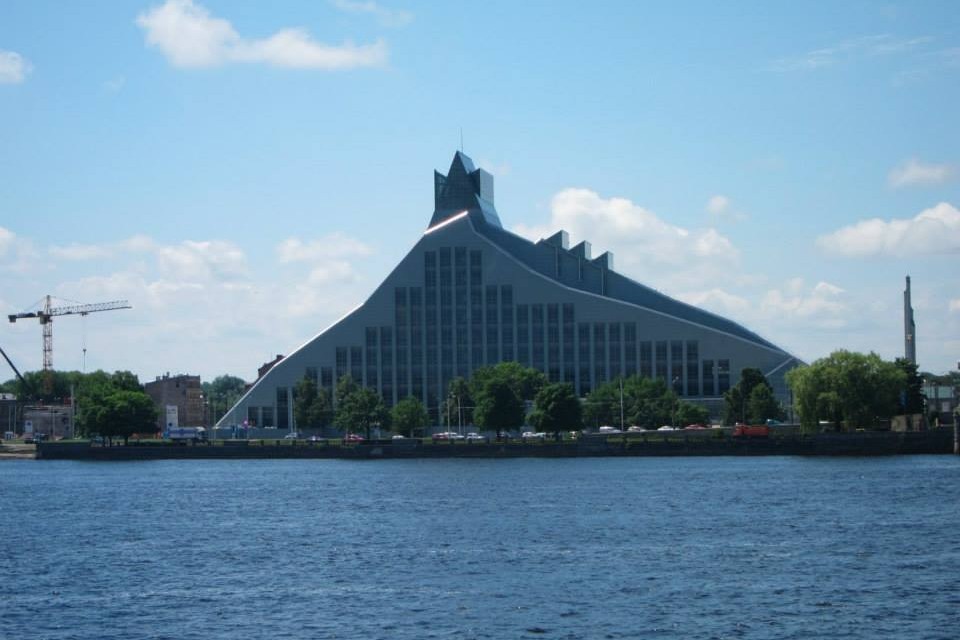The Eye-Catching Architecture of Rīga
Some travellers I know felt let down when they hopped over from Tallinn, Estonia to Rīga, Latvia‘s capital, and didn’t see another walled town with consistently mediaeval buildings. There is no reason why it should, however. Estonia and Latvia may be neighbours with some shared recent history, but they are very distinct countries, even if the tendency to lump them with Lithuania as ‘the Baltic States’ suggests otherwise.
It’s more meaningful to appreciate the differences instead, for the biggest city in the Baltic countries treats the eye to a smörgåsbord of architecture spanning the ages. That doesn’t seem like a bad thing to me.
Vecrīga architecture
Other than the Swedish Gate and the Powder Tower, little of the old city wall remains. They must have seemed pointless after a while, for they were cleared in the 19th Century and used to create the adjacent Bastion Hill park. As a result, the limits of Vecrīga are defined only by the old moat. That and the parks, squares and green spaces make the city a bright and breezy one on a midsummer’s day (or night).




Some narrow cobblestone streets remain, of course, flanked by buildings that are mostly more than 70 years old. yes, there are travel agencies and souvenir shops, but the façades also conceal plenty of regular businesses and a few hipster ones, like record stores, bicycle shops and cafes.
I really liked Folkklubs Ala, a lively underground tavern and music venue that features a wide selection of local food and drinks. Even if that’s no longer a local secret (everyone I know seems to have been there), I’m thankful for options that are not tourist restaurants or Irish pubs.

Art Nouveau
The area to the north of Vecrīga is filled with the sounds of different tongues, elderly tour groups and the occasional honk when absent-minded tourists stray onto the street. It’s a minor annoyance as the secret that Rīga contains the highest concentration of art nouveau or jungendstil architecture is not a well-kept one.
Alberta iela is almost exclusively lined with such buildings on both sides. Everywhere one looks there are dragons, gargoyles, Medusas and other anguished mythological figures. Very few 20th Century streets feel like a film set but this does, and it’s free! I dare say it’s the top reason an art enthusiast should visit Rīga. People no longer build houses like these anywhere, even if they have the money.
Film buffs might be interested to know that Mikhail Eisenstein, the father of Sergei (of Battleship Potemkin fame) designed some of them. To find out which ones, as well as the other pockets of art nouveau around Rīga, just pop into the Art Nouveau Museum and pick up a guide. Some of the staff there look like they stepped straight out of The Great Gatsby.



Not your kind of architecture? Click to read about Villa Tugendhat.
The Ethnographic Open-Air Museum
Open-air museums are common in this part of Europe and Rīga is no exception. Folk architecture from other parts of Latvia, much of it centuries old, was relocated to Latvijas Etnogrāfiskais brīvdabas muzejs on the shores of a quiet lake just north of the capital. It saves trips to the ends of the country to see traditional timber and thatch houses like these.
Besides buildings, there are shops selling local dishes, amber pendants and folk costumes.
The ethnographic museum holds traditional midsummer celebrations one to two weeks before the actual festival takes place on 23 June every year. If the carnival in the middle of the city doesn’t appeal to you, remember to visit Riga early to experience it in these lush settings.
Click to read about the Līgo (midsummer) celebrations.


Something newer
Amidst all this built heritage, there are also more recent additions to the cityscape. Some are nice ideas, even if I don’t always understand the execution.

Central Tirgus, built in the art deco style, is a stone’s throw from the bus and train stations. It’s hard to miss its distinctive silhouette. The five semi-cylindrical pavilions make up more than half of the world’s remaining Zeppelin hangars. It’s touristy for sure – the souvenir stalls are in the sections between the halls – but there are plenty of fresh pickings for localvores. Sandra found cherries that were cheaper than her neighbourhood market. I found angry sparrows that wanted my balsam ice-cream.

Latvian-American architect Gunnar Birkerts had a hand in the restoration of the market. He was also responsible for the Castle of Light on the western bank of the Daugava river. The new home of the National Library was opened in 2014, the year that Rīga was named European Capital of Culture, with Latvians transferring books to the library in a human chain.
From that side of the river the view of the Vecrīga skyline is excellent – see the featured photo at the top of the post to understand what I mean. Just take an ID along, as the building is also currently used by the Latvian EU presidency.

Lastly…
It’s been nearly a century since Latvia was first proclaimed a republic. The Freedom Monument, erected 80 years ago to commemorate those who fought and died in the War of Independence, somehow survived the intervening years and a couple of Soviet plans to demolish it. No wonder it’s a symbol of national pride and sovereignty. It may be well-weathered but there is no way it will be brought down.

Want to see more than just Rīga? Head to Cesis and Sigulda then, or Salaspils.